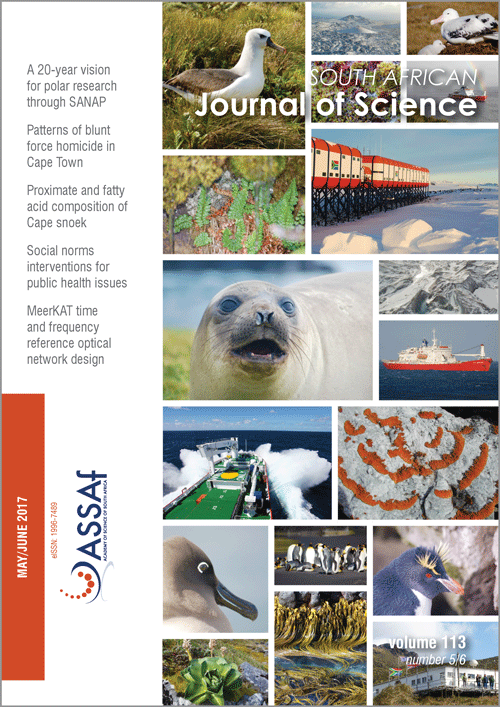MeerKAT time and frequency reference optical network: Preliminary design analysis
DOI:
https://doi.org/10.17159/sajs.2017/20160238Keywords:
telescope, optical fibre network, timing signals, phase noise, precursorAbstract
The MeerKAT telescope is a precursor to the Square Kilometre Array, which will rely on optical fibres to link the telescope receivers to a central processor point. The main aspects to consider for the fibre transport are astronomical data transmission as well as timing, monitoring and control. The astronomical data streams from individual dishes to a central building, while the clock signal is distributed from a central point to remote dishes in the telescope array. The MeerKAT telescope, for instance, demands highly accurate and stable clock distribution over up to 12 km of optical fibre to remote dishes. The clock distribution is required for digitisation of astronomical signals. Phase stability is thus critical both for short-term and long-term requirements. In this work, we focused on the short-term stability. Phase noise measurements were performed on optical transmitters used to distribute the clock signals so as to ascertain their contribution to the overall clock jitter of the system. A maximum jitter requirement of 130 fs for a 1.712-GHz clock signal for MeerKAT time and reference is achieved using a distributed feedback laser. We found that with optimised modulation depth, additional passive optical components in the link do not significantly degrade the phase noise response. A distributed feedback laser was proven to be a suitable optical source that will meet the performance and link budget requirements for the MeerKAT telescope.
Significance:- A distributed feedback laser is recommended for the design of the MeerKAT time and reference system as it is a suitable optical source that will meet the performance and link budget requirements.
Published
Issue
Section
License

All articles are published under a Creative Commons Attribution 4.0 International Licence
Copyright is retained by the authors. Readers are welcome to reproduce, share and adapt the content without permission provided the source is attributed.
Disclaimer: The publisher and editors accept no responsibility for statements made by the authors
How to Cite
- Abstract 444
- PDF 453
- EPUB 199
- XML 256













.png)